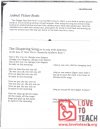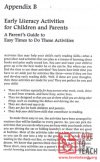The institute served the city’s poorest—those who lived crammed in the rickety makeshift dwellings in the foothills of the surrounding mountains. At the time, this was the biggest neonatal unit in all of Colombia, responsible for delivering 30,000 babies a year. Overcrowding was so bad that three babies would have to share an incubator at a time and the rate of cross-infection was high. Death rates were spiraling, and so too was the level of abandonment. Many young, impoverished mothers who never even got to touch their babies found it easier just to take off.
Scouting around for a solution to these problems, Rey happened upon a paper on the physiology of the kangaroo. It mentioned how at birth, kangaroos are bald and roughly the size of a peanut—very immature, just like a human pre-term baby. Once in its mother’s pouch, the kangaroo receives thermal regulation from the direct skin-to-skin contact afforded by its lack of hair. It then latches onto its mother’s nipple, where it remains until it has grown to roughly a quarter of its mother’s weight, when it is finally ready to emerge into the world.
“It’s not a cheap alternative. It’s not something just to be done in poor countries,” says Charpak. “There is a cost to it. It’s a proper neonatal care with advantages that are clinically proven.”
Undeniably, though, it is cheaper. The estimated cost of neonatal care for premature babies in the United States is $3,000–5,000 a day. In contrast, in low-income countries a KMC program can cost as little as $4.60 a day.
“We now know the best protection from infection [for the baby] is to be colonized by its mother’s bacteria. We also know the best thing for its brain development is skin-to-skin, the best way to maintain blood sugar levels so it doesn’t get hyperglycaemic is skin-to-skin. And what we didn’t know in 1988 was that there are a whole set of nerves on the baby’s chest and on the mother’s chest that only get stimulated by skin-to-skin contact, which send oxytocin messages to the baby’s brain.”
“The findings are ground-breaking,” says Villegas. “We found the kangaroo babies were less hyperactive, less antisocial and they even earned higher wages. This is especially significant because these were babies who were the most fragile to begin with and who came from a lower socioeconomic background. We also discovered if the father helped carry the infant, 20 years later there is a stronger family bond and less separation. Results show if you take a mother, no matter what her economic background, and give her the tools and education she needs to look after her own child, it will have the same outcomes as if she were from a higher economic status. It’s a way of shortening the gap between social and educational status. This is why we say with kangaroo care, we fight inequality. We don’t just save lives, we change lives.”
- Source: https://arstechnica.com/science/2017/02/kangaroo-care-why-keeping-baby-close-is-better-for-everyone/





